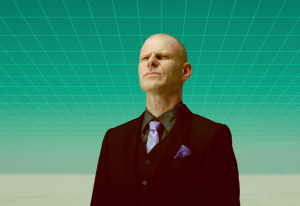 Over the last year, Junkie XL aka Tom Holkenborg has quickly risen to the top of the Hollywood film music scene. Just within the last eight months, the composer had his first three major Hollywood features released in theaters, including last summer’s thriller Paranoia starring Liam Hemsworth, Harrison Ford & Gary Oldman and this month’s two top-grossing movies at the domestic box office, 300: Rise of an Empire and Divergent; and he is currently in the process of composing the music for another high profile production to come out in 2015, Mad Max: Fury Road. Growing up in Holland in a family of multi-instrumentalists, the composer was in his teens when the first samplers became available to the general public in the early 80s. “That was the time period where I really got my feet wet with electronic music and I knew from that point on what my future would be,” the composer says. Holkenborg started Junkie XL in 1994, released his first EDM record in 1997 and soon started to receive offers to help out on film projects, including the original Resident Evil and Blade films, as well as The Matrix trilogy. “In 2002, I made the decision to move to LA and basically learn film scoring from the ground up. That was a very interesting year, I had a number one hit with the Elvis remix (A Little More Conversation) and at the same time, I was Harry Gregson-Williams’ assistant,” he recalls. Later on, he started composing his own scores, including a number of alternative films in his native country. Eventually, Hans Zimmer offered him a studio at his Remote Control Productions company and he started working with him on most of his projects for the past few years.
Over the last year, Junkie XL aka Tom Holkenborg has quickly risen to the top of the Hollywood film music scene. Just within the last eight months, the composer had his first three major Hollywood features released in theaters, including last summer’s thriller Paranoia starring Liam Hemsworth, Harrison Ford & Gary Oldman and this month’s two top-grossing movies at the domestic box office, 300: Rise of an Empire and Divergent; and he is currently in the process of composing the music for another high profile production to come out in 2015, Mad Max: Fury Road. Growing up in Holland in a family of multi-instrumentalists, the composer was in his teens when the first samplers became available to the general public in the early 80s. “That was the time period where I really got my feet wet with electronic music and I knew from that point on what my future would be,” the composer says. Holkenborg started Junkie XL in 1994, released his first EDM record in 1997 and soon started to receive offers to help out on film projects, including the original Resident Evil and Blade films, as well as The Matrix trilogy. “In 2002, I made the decision to move to LA and basically learn film scoring from the ground up. That was a very interesting year, I had a number one hit with the Elvis remix (A Little More Conversation) and at the same time, I was Harry Gregson-Williams’ assistant,” he recalls. Later on, he started composing his own scores, including a number of alternative films in his native country. Eventually, Hans Zimmer offered him a studio at his Remote Control Productions company and he started working with him on most of his projects for the past few years.
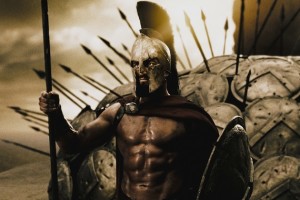 When Junkie XL collaborated with Zimmer on Man of Steel, the film’s director Zack Snyder offered him the job to score 300: Rise of an Empire, which the filmmaker was producing at the same time. “He saw the work I did on Man of Steel and I think he was drawn to how I approach rhythms and how I approach sound in general.” The composer used a lot of unusual instruments and sounds to create his score (check out the video below for a featurette about the creation of the music). ” Musically you can take a lot of liberties and don’t necessarily have to stick to what’s culturally defined even though I used a lot of those elements and looked into Persian harmonies and scales and what instruments were used during the time period. But if you would do a culturally acceptable score what music was back in the day, you would just end up with a harp and a lute, some small rhythm instruments, sitar and some flutes and it would not be what this movie needs,” Holkenborg says. “I think the palettes for 300 needed to be very aggressive and very big. You can take a lot of liberties by using instruments that have nothing to do with this culture, but have something to do with what the movie is and how the movie comes across.”
When Junkie XL collaborated with Zimmer on Man of Steel, the film’s director Zack Snyder offered him the job to score 300: Rise of an Empire, which the filmmaker was producing at the same time. “He saw the work I did on Man of Steel and I think he was drawn to how I approach rhythms and how I approach sound in general.” The composer used a lot of unusual instruments and sounds to create his score (check out the video below for a featurette about the creation of the music). ” Musically you can take a lot of liberties and don’t necessarily have to stick to what’s culturally defined even though I used a lot of those elements and looked into Persian harmonies and scales and what instruments were used during the time period. But if you would do a culturally acceptable score what music was back in the day, you would just end up with a harp and a lute, some small rhythm instruments, sitar and some flutes and it would not be what this movie needs,” Holkenborg says. “I think the palettes for 300 needed to be very aggressive and very big. You can take a lot of liberties by using instruments that have nothing to do with this culture, but have something to do with what the movie is and how the movie comes across.”
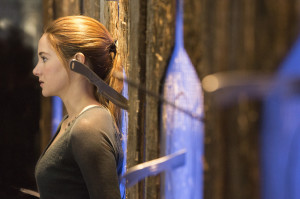 After completing his first major studio assignment, he was offered to score the YA novel film adaptation of Divergent directed by Neil Burger. “I was introduced to the producers by Hans Zimmer who thought I would be the right person for this movie. I had a very long conversation with the producers before I even saw the film. They sent me the script and I talked a long time with the director. Based on that, I just started writing music,” Junkie XL says. “I got really inspired and wrote 30 minutes of music showing what the main character could be as a person and I think that really pulled them over and that’s when I got the job and the opportunity to write more music. All the music I made based on the script made it into the movie eventually.” The composer didn’t read the book on purpose, but it became apparent to him that the film was shot from the first person perspective of Tris, portrayed by Shailene Woodley and the music had to reflect that. “It was obvious to me that whatever the music was, it needed to have an effect that you are drawn into the main character as a person. Five minutes in, she finds out she’s a Divergent and therefore is a danger to society and runs the risk of getting killed. She has nothing she can trust and no friends she can fall back on because of she has that big secret. It would be great if the music would make the audience her best friend so that the audience would root for her to get through this. At the same time, it’s a sci-fi movie and the pitfall was that you make a somewhat electronic score because it takes place in the future, but that would have movie turned into a third person perspective. I really wanted to create something that would keep us close to her. That’s why the score starts really small with organic instruments, but the combination of the instruments is somewhat weird and unusual. That’s one of the reasons I picked the piano and strings and a dulcimer and a couple of other things that are not quite normal,” he says explaining how this would make the world the movie lives in feel unfamiliar especially to a younger audience.
After completing his first major studio assignment, he was offered to score the YA novel film adaptation of Divergent directed by Neil Burger. “I was introduced to the producers by Hans Zimmer who thought I would be the right person for this movie. I had a very long conversation with the producers before I even saw the film. They sent me the script and I talked a long time with the director. Based on that, I just started writing music,” Junkie XL says. “I got really inspired and wrote 30 minutes of music showing what the main character could be as a person and I think that really pulled them over and that’s when I got the job and the opportunity to write more music. All the music I made based on the script made it into the movie eventually.” The composer didn’t read the book on purpose, but it became apparent to him that the film was shot from the first person perspective of Tris, portrayed by Shailene Woodley and the music had to reflect that. “It was obvious to me that whatever the music was, it needed to have an effect that you are drawn into the main character as a person. Five minutes in, she finds out she’s a Divergent and therefore is a danger to society and runs the risk of getting killed. She has nothing she can trust and no friends she can fall back on because of she has that big secret. It would be great if the music would make the audience her best friend so that the audience would root for her to get through this. At the same time, it’s a sci-fi movie and the pitfall was that you make a somewhat electronic score because it takes place in the future, but that would have movie turned into a third person perspective. I really wanted to create something that would keep us close to her. That’s why the score starts really small with organic instruments, but the combination of the instruments is somewhat weird and unusual. That’s one of the reasons I picked the piano and strings and a dulcimer and a couple of other things that are not quite normal,” he says explaining how this would make the world the movie lives in feel unfamiliar especially to a younger audience.
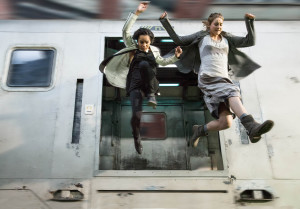 “Another approach for her was that she is a 16-year old girl that feels insecure and not quite in place with her family and I think she would find more solace in a ballad of Beyonce or Adele than in a sad Ennio Morricone or Samuel Barber piece,” Holkenborg explains. “When the music starts, we kind of stick to a pop music environment and as she grows throughout the film and matures, so does the music.” He also collaborated with singer/songwriter Ellie Goulding on his score. “Once we found out that that she might be interested in doing this, we came up with all these ideas of what we possible could do. The first thing we did after she saw the movie and really liked it, we just hang out in the studio for four hours, drank some wine and we just got to know each other. She got so inspired by the whole thing, she started sending me files from London, singing along with the score and with some of the musical themes I have written beforehand. I used bits and pieces of what she did everywhere and I did a lot of editing.” They eventually met up again at the score’s recording sessions at Air Studios in London to record her vocals (check out a video about their collaboration below).
“Another approach for her was that she is a 16-year old girl that feels insecure and not quite in place with her family and I think she would find more solace in a ballad of Beyonce or Adele than in a sad Ennio Morricone or Samuel Barber piece,” Holkenborg explains. “When the music starts, we kind of stick to a pop music environment and as she grows throughout the film and matures, so does the music.” He also collaborated with singer/songwriter Ellie Goulding on his score. “Once we found out that that she might be interested in doing this, we came up with all these ideas of what we possible could do. The first thing we did after she saw the movie and really liked it, we just hang out in the studio for four hours, drank some wine and we just got to know each other. She got so inspired by the whole thing, she started sending me files from London, singing along with the score and with some of the musical themes I have written beforehand. I used bits and pieces of what she did everywhere and I did a lot of editing.” They eventually met up again at the score’s recording sessions at Air Studios in London to record her vocals (check out a video about their collaboration below).
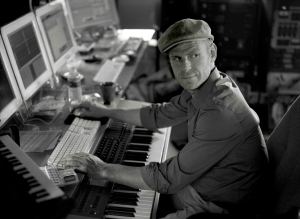 He also made sure that his score would fit in with the songs used in the movie and worked together with the film’s music supervisor Randall Poster. “His knowledge of modern music is quite impeccable, I have to say I was really blown away. He came up with all these really interesting tracks that would work with the score, but at the same time would work with the film and would make it appeal to a younger audience, so it doesn’t feel outdated or forced. The tracks that he picked are doing what they’re supposed to do, but at the same time they feel sympathetic and it doesn’t feel we need to drop all of these big songs in the movie.” Hans Zimmer served as the score executive producer on the project and would keep his eyes on the project in the early stages. “He was there for the first three or four meetings to make sure that all the ideas are properly crystalized and he had a couple of ideas of what we should be doing for certain scenes that turned into a problem. There’s one very pivotal scene at the very end of the movie that I did multiple versions for. It was such a difficult scene to score and he came out a couple of times with really good ideas to look at that scene from a very different angle. Eventually we nailed it. It’s one of the scenes I’m very happy with. Now I can see why it took ten or twelve attempts to get it really right. I’ve been very blessed that I’m working so much with him and I’ve learned so much from him. We have a great working relationship.”
He also made sure that his score would fit in with the songs used in the movie and worked together with the film’s music supervisor Randall Poster. “His knowledge of modern music is quite impeccable, I have to say I was really blown away. He came up with all these really interesting tracks that would work with the score, but at the same time would work with the film and would make it appeal to a younger audience, so it doesn’t feel outdated or forced. The tracks that he picked are doing what they’re supposed to do, but at the same time they feel sympathetic and it doesn’t feel we need to drop all of these big songs in the movie.” Hans Zimmer served as the score executive producer on the project and would keep his eyes on the project in the early stages. “He was there for the first three or four meetings to make sure that all the ideas are properly crystalized and he had a couple of ideas of what we should be doing for certain scenes that turned into a problem. There’s one very pivotal scene at the very end of the movie that I did multiple versions for. It was such a difficult scene to score and he came out a couple of times with really good ideas to look at that scene from a very different angle. Eventually we nailed it. It’s one of the scenes I’m very happy with. Now I can see why it took ten or twelve attempts to get it really right. I’ve been very blessed that I’m working so much with him and I’ve learned so much from him. We have a great working relationship.”
 Coming from an electronic music background, the composer had to adapt his style for the medium of film. “When I came out to LA ten years ago, I thought you can place EDM music everywhere in a movie, but it doesn’t really work like that. EDM is fantastic and I have really strong roots it. It’s a fantastic music style and it’s great to see how it develops and how it got entangled into pop music. But if I have to be really critical and I think I can say this because I’ve been an EDM artist for the longest time, it’s not 100% completely compatible with film scoring. You can use a lot of elements from it, but you need a bunch of other elements, real instruments to do something interesting with it. The nature of EDM is that it’s very direct, dry and very loud and it doesn’t lend itself all that well to paint all the emotions we need for film scoring. Even though a couple of composers have done it really successfully, like Jean-Michel Jarre, Vangelis or Giorgio Moroder, they have done really good versions of what you can do fully electronically in films. At the same time, it’s not as timeless, even though now looking back, Blade Runner is still timeless, but it evidently brings up what music was in the 80s. An orchestra takes that away, but I think there is a lot of experimentation needed to incorporate dance music into film music in a more natural way.”
Coming from an electronic music background, the composer had to adapt his style for the medium of film. “When I came out to LA ten years ago, I thought you can place EDM music everywhere in a movie, but it doesn’t really work like that. EDM is fantastic and I have really strong roots it. It’s a fantastic music style and it’s great to see how it develops and how it got entangled into pop music. But if I have to be really critical and I think I can say this because I’ve been an EDM artist for the longest time, it’s not 100% completely compatible with film scoring. You can use a lot of elements from it, but you need a bunch of other elements, real instruments to do something interesting with it. The nature of EDM is that it’s very direct, dry and very loud and it doesn’t lend itself all that well to paint all the emotions we need for film scoring. Even though a couple of composers have done it really successfully, like Jean-Michel Jarre, Vangelis or Giorgio Moroder, they have done really good versions of what you can do fully electronically in films. At the same time, it’s not as timeless, even though now looking back, Blade Runner is still timeless, but it evidently brings up what music was in the 80s. An orchestra takes that away, but I think there is a lot of experimentation needed to incorporate dance music into film music in a more natural way.”
As far as his future plans go, he will busy for the next two months working on George Miller’s Mad Max: Fury Road and has yet to decide what projects he will work on afterwards. “I’m very much open to anything. I have done alternative movies in Europe with just a piano and a cello. It’s really challenging to do movies like that. I love the big action movies and dystopian movies that cater to a younger audience, but I also love really serious dramas where there’s only room for three or four pieces of music in a film and really focus on that. At the end of the day, every movie is a challenge on its own.”

Arcade stands as one of my favorite pieces of film score ever.
… is he gonna use the same drum rhythm in every movie? 300: Rise of an Empire and Divergent are practically the same thing. And people complained about James Horner repeating himself…